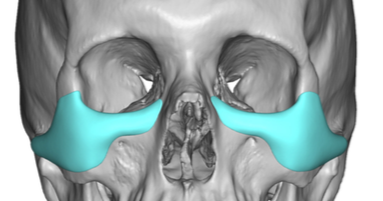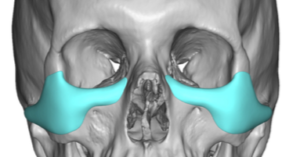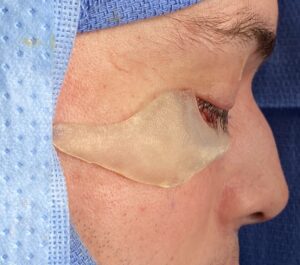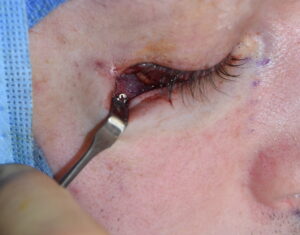Cheek implant augmentation in a male must be considered differently than in a female. There are significant gender differences in the desired midface effect. Females typically desire a more anterior oval-shaped fullness that has been associated with attractive female faces. That is exactly the look that most men don’t want because it has a feminizing effect. Rather they prefer a higher augmentation that follows the natural skeletal line from just under the eye back along the zygomatic arch. This has a stronger skeletal look which is generally recognized with a more masculine face.
Some men that consider cheek implants also have an associated undereye deficiency or hollowing. This can be seen by a near or complete negative orbital vector which represents an infraorbital-malar skeletal deficiency. Because of the bony connections the flatter the cheek is the more recessed the infraorbital rim position becomes. This inward tilt to the superior support structures of the midface can not be properly addressed with any conventional cheek implant. Attempts to do often make the infraorbital rim deficiency more pronounced as this area is left untreated.
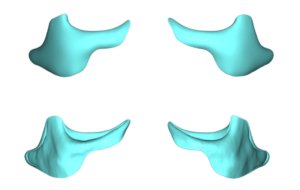
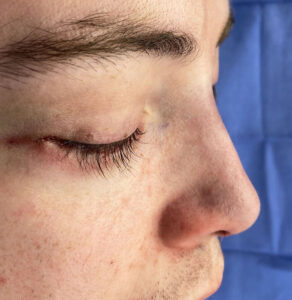
The high cheekbone look in a male requires a near or complete horizontal augmentation across the main body of the zygoma. Lack of cheek prominence is often associated with an infraorbital rim deficiency as well which is often seen as a negative orbital vector. The custom infraorbital-malar implant provides a complete bony augmentation across the middle line of the face which concurrently addresses undereye hollowing and lack of a defined cheek structure. It is somewhat similar to what is done in the lower face with a custom jawline implant where the entire horizontal line of the jaw is augmented.
Dr. Barry Eppley
Indianapolis, Indiana

